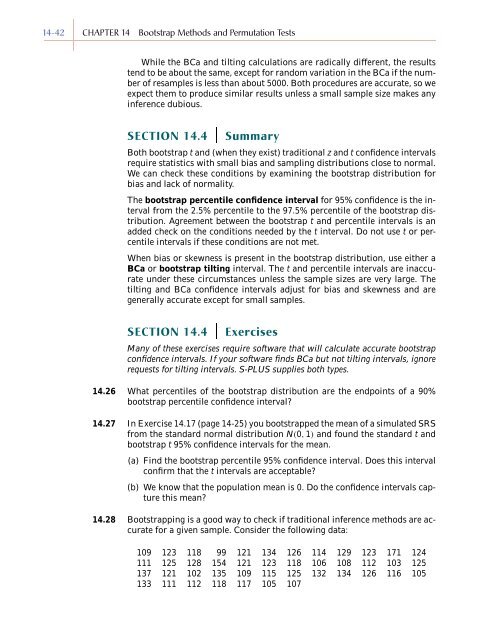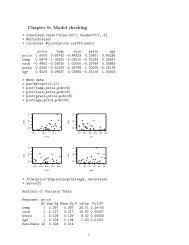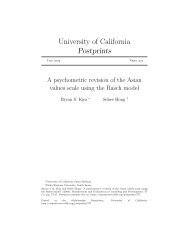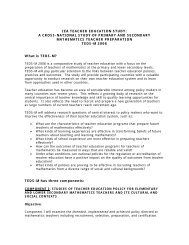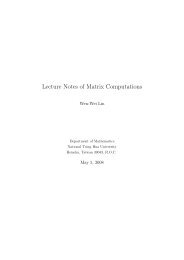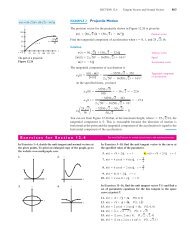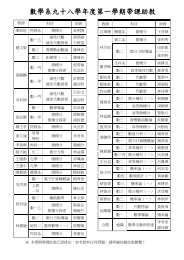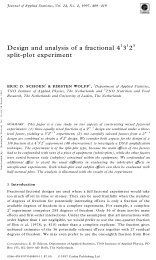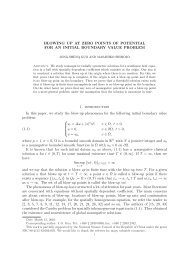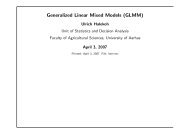Chapter 14 - Bootstrap Methods and Permutation Tests - WH Freeman
Chapter 14 - Bootstrap Methods and Permutation Tests - WH Freeman
Chapter 14 - Bootstrap Methods and Permutation Tests - WH Freeman
You also want an ePaper? Increase the reach of your titles
YUMPU automatically turns print PDFs into web optimized ePapers that Google loves.
<strong>14</strong>-42 CHAPTER <strong>14</strong> <strong>Bootstrap</strong> <strong>Methods</strong> <strong>and</strong> <strong>Permutation</strong> <strong>Tests</strong><br />
While the BCa <strong>and</strong> tilting calculations are radically different, the results<br />
tend to be about the same, except for r<strong>and</strong>om variation in the BCa if the number<br />
of resamples is less than about 5000. Both procedures are accurate, so we<br />
expect them to produce similar results unless a small sample size makes any<br />
inference dubious.<br />
SECTION <strong>14</strong>.4<br />
Summary<br />
Both bootstrap t <strong>and</strong> (when they exist) traditional z <strong>and</strong> t confidence intervals<br />
require statistics with small bias <strong>and</strong> sampling distributions close to normal.<br />
We can check these conditions by examining the bootstrap distribution for<br />
bias <strong>and</strong> lack of normality.<br />
The bootstrap percentile confidence interval for 95% confidence is the interval<br />
from the 2.5% percentile to the 97.5% percentile of the bootstrap distribution.<br />
Agreement between the bootstrap t <strong>and</strong> percentile intervals is an<br />
added check on the conditions needed by the t interval. Do not use t or percentile<br />
intervals if these conditions are not met.<br />
When bias or skewness is present in the bootstrap distribution, use either a<br />
BCa or bootstrap tilting interval. The t <strong>and</strong> percentile intervals are inaccurate<br />
under these circumstances unless the sample sizes are very large. The<br />
tilting <strong>and</strong> BCa confidence intervals adjust for bias <strong>and</strong> skewness <strong>and</strong> are<br />
generally accurate except for small samples.<br />
SECTION <strong>14</strong>.4<br />
Exercises<br />
Many of these exercises require software that will calculate accurate bootstrap<br />
confidence intervals. If your software finds BCa but not tilting intervals, ignore<br />
requests for tilting intervals. S-PLUS supplies both types.<br />
<strong>14</strong>.26 What percentiles of the bootstrap distribution are the endpoints of a 90%<br />
bootstrap percentile confidence interval?<br />
<strong>14</strong>.27 In Exercise <strong>14</strong>.17 (page <strong>14</strong>-25) you bootstrapped the mean of a simulated SRS<br />
from the st<strong>and</strong>ard normal distribution N(0, 1) <strong>and</strong> found the st<strong>and</strong>ard t <strong>and</strong><br />
bootstrap t 95% confidence intervals for the mean.<br />
(a) Find the bootstrap percentile 95% confidence interval. Does this interval<br />
confirm that the t intervals are acceptable?<br />
(b) We know that the population mean is 0. Do the confidence intervals capture<br />
this mean?<br />
<strong>14</strong>.28 <strong>Bootstrap</strong>ping is a good way to check if traditional inference methods are accurate<br />
for a given sample. Consider the following data:<br />
109 123 118 99 121 134 126 1<strong>14</strong> 129 123 171 124<br />
111 125 128 154 121 123 118 106 108 112 103 125<br />
137 121 102 135 109 115 125 132 134 126 116 105<br />
133 111 112 118 117 105 107


